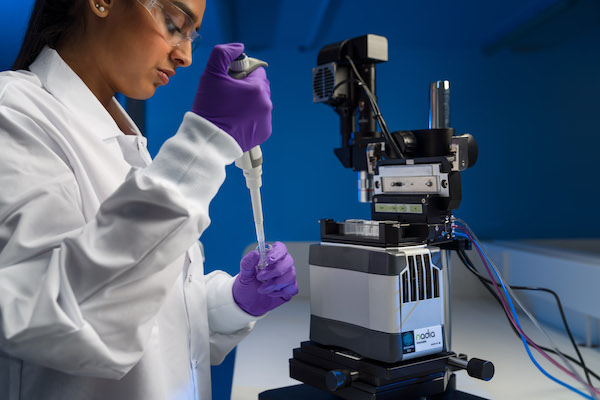Members Login

Channels
Special Offers & Promotions
Advancing Motor Neuron Research with Single Nuclei Sequencing
Dolomite Bio’s Nadia Instrument is helping researchers to gain a deeper understanding of motor neuron disease through the use of single nuclei RNA sequencing (sNuc-Seq).
This automated, microfluidic droplet-based platform allows flexible encapsulation of up to eight samples in parallel in under 20 minutes, helping to accelerate studies and generate high quality data. Christopher Sibley, a Junior Research Fellow in the Brain Science Division at Imperial College London, has been using the Nadia Instrument to further his research. He explained: “Our ultimate research goal is to gain primary mechanistic insights into motor neuron disease, which is universally fatal with no known cure. Recent research has highlighted that the disease involves a complex interplay of many different cell types that leads to death of motor neurons, so it’s important that we study the cellular dynamics of the disease.”
“We entered the single-cell field with a homemade microfluidic capture platform, but there was a lot of variability between runs. We then started using the Dolomite Bio Nadia and Nadia Innovate, and were able to generate much higher quality and more consistent results. However, some of the cell types we are interested in have projections up to a meter long and are impossible to get into sub-millimeter droplets, so we started running the sNuc-Seq protocol, because nuclei are more uniformly sized, easy to extract, and are fairly robust for archiving.”
“The Nadia Innovate is incredibly intuitive and easy to use, and its versatility has allowed us to optimize parameters to reduce droplet volumes, increase capture rates and concentrate the RNA, giving a better insight of gene expression in each cell. Additionally, the ability to multiplex on the platform gives us the choice to run up to eight chips in parallel, which reduces the variables in our workflow, and massively increases our throughput. sNuc-Seq has allowed us to detect gene expression changes in different cell types in motor neuron disease, and has accelerated our research in a short space of time. It has really opened up a whole new dimension to our research,” Dr Sibley concluded.
Media Partners



